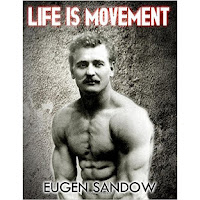When I visited Brad Steiner and trained under him for 2 weeks, in May 2014, we spoke of many subjects and issues, one such subject was Leadership.
I had just retired from my job, and I had taught leadership with the help of another trainer. The course I taught was broken into subjects such as Communication, Leadership, and Managing Difficult people, which what we all do every day. I was fascinated to ask Brad as to me he was a natural Leader, had attended no College and had not completed any such courses in Leadership.
During the training I encountered many difficult people along the way, and Brad’s knowledge on the subject allowed me to answer some of those questions and difficulties I had. In our lives we have to show Leadership in all we do such a raising a family, Weight training , fitness and health, working at a job you love, and generally being a good person. I used my tape recorder for all our conversations I am glad I did, as what I recorded for 2 weeks was gold.
Below is mostly Brad Steiner’s interpretation plus some of my own.
Leadership
To be a good leader you first must become so good in what you are intending to lead others in that they seek and appreciate your leadership (Australian Rules Football or Soccer two). They have respect and confidence in you.
My advice is not to worry about "being a leader" at all. Just concentrate on doing what you love and enjoy and doing it so well that you rise to a level of achievement that draws others to you. Learn to be patient, courteous, respectful of everyone who comes to you (until or less they betray you) and treat all with whom you deal with, with utmost dignity and honesty. "Leading" them then becomes easy.
Pay no attention at all to leadership "programs" or "courses". These teach you gimmicks and tactics for MANIPULATING people. Sooner or later, even if you become good at that garbage, it will backfire on you. Competence, reliability, trustworthiness, fairness, an uncompromising willingness to take responsibility for those under you, and compassion coupled with sympathy and empathy would be what I recommend to any "leader" if he really wants to be a leader. Not "seeming" to be all those things; but and truly BEING THEM.
Do not worry about the past. Nothing can be done about that which has already been done. Just resolve to do your best from here on in and learn from past mistakes.
Personal confidence come from demanding of yourself that you do that which instils a bit of fear and anxiety. Not terror and a paralyzing fear that you will never make it, but a moderate amount of fear. Then continue doing this, always increasing the challenges. Start right now. What means a lot to you, yet you have hesitated to begin? Do it now. Then pick something else. Follow that road. As you accumulate the experience of seeing that you can accomplish what you were not able to do previously, your confidence will grow. If that which you want to do is legal, harms no one, and is fundamentally rational, you should have no hesitation about forging ahead. And do not stop trying. Failures are steppingstones to successes. If you do not fail a lot, you will never succeed.
You be the judge of what success means to YOU. Listen to no one who tells you what you "should" succeed in or desire in your life. No one cares about your happiness and success more than (or even as much as) Y O U.
Life skills are achieved by living life and by approaching the skills you want and need and learning them; one at a time.
Look and search for ways to improve your skills. Need ability interacting with people? Look for ways and opportunities to interact with people —— preferably people who share, at least in part, your values. Whatever the skill set, participation and personal, persistent commitment is how to master it.
Along the way in life, you will encounter people who will prove to be mean-spirited, treacherous, saboteurial, phony, self-serving, dishonest, jealous, and so on. Shrug them off and out of your life immediately you perceive what they really are. Waste not another second on them. Just as you flush the toilet to get rid of excrement, mentally "flush" forever out of your life the living excrement you inevitably encounter. Focus your time, energy, love, and thoughts on that which is important to you and will bring you rich rewards. Waste nothing on life's debris.
Be extremely careful when dealing with friends who do not want the best for you. They can do more to wreck your life and happiness than a prison sentence! Be very, very careful when choosing a friend, a good friend is a reflection of yourself. One must take on leadership and responsibility when you marry, marriage is a potentially great institution. But the operative word there is "potentially" . . . so do be careful, patient, open-eyed, and rigorously honest with yourself, before you permit yourself to marry. You are far better off single than unhappily married. And most people are at times very unhappily married —— or soon will be!
Several books I would recommend which would increase your knowledge of Leadership are
Think and Grow Rich, by Napoleon Hill
The Magic of Thinking Big, by Dr David J Schwartz
How I Found Freedom in an Unfree World, by Harry Browne
A New Guide to Rational Living, by Dr. Albert Ellis and Dr. Robert A. Harper
The Art of Selfishness, by Dr. David Seabury
Will, by G. Gordon Liddy
Rules of Life by Jordan Peterson



